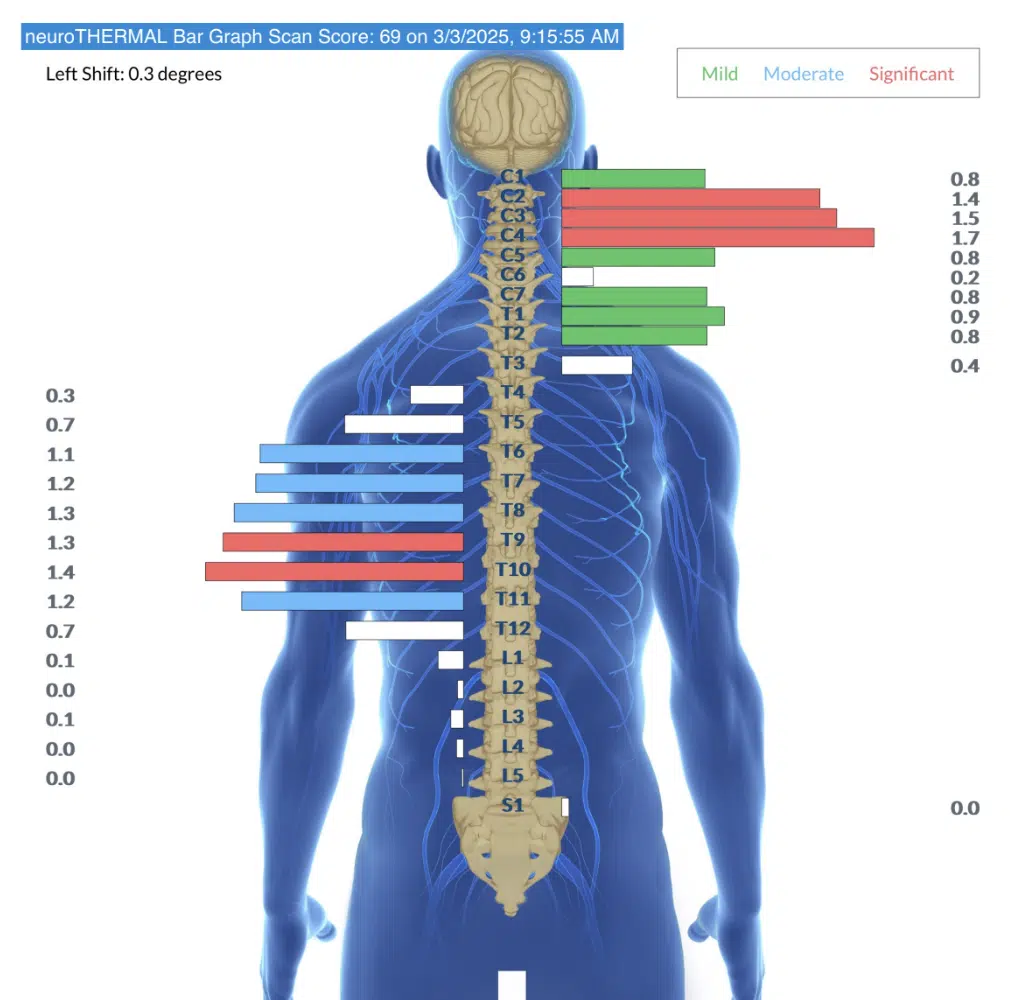For parents of children with Pathological Demand Avoidance (PDA) Autism, everyday life can feel like an endless cycle of meltdowns, mood swings, negotiations, and exhaustion. Your child’s intense resistance to even the simplest requests, like getting dressed or brushing their teeth, may leave you feeling frustrated, helpless, and questioning your parenting abilities. You may have sought answers from medical professionals, only to be met with blank stares or misdiagnoses.
With about 1 in 31 children being diagnosed with Autism Spectrum Disorder, PDA Autism is a complex and often misunderstood condition that requires a unique approach to care—one that focuses on the root causes of your child’s challenges and addresses the underlying dysfunction in their nervous system.
This article aims to provide a comprehensive overview of PDA Autism, its signs, and the groundbreaking approach offered by PX Docs, a network of Neurologically-Focused Chiropractors dedicated to helping children with Autism Spectrum Disorders thrive.
What is PDA Autism?
PDA Autism, short for Pathological Demand Avoidance Autism, is a complex and often misunderstood condition that falls within the Autism Spectrum. The term “pathological” in this context refers to the pervasive and extreme nature of demand avoidance, which goes beyond typical childhood resistance or defiance.
Some experts also use the term “Persistent (or “Pervasive”) Drive for Autonomy” to emphasize the individual’s deep-seated need for control and independence.
The concept of Pathological Demand Avoidance Autism was first introduced by British psychologist Elizabeth Newson in the 1980s. Newson observed a group of children who shared many characteristics with Autism but displayed a unique and intense resistance to everyday demands and expectations.
While PDA is not currently recognized as a separate diagnosis in the DSM-5 (the primary diagnostic manual used in the United States), it is widely acknowledged as a distinct profile within the Autism spectrum.
Individuals with PDA Autism exhibit a range of characteristics that set them apart from others on the Autism spectrum. These core features include:
- Resisting and avoiding everyday demands to an extreme extent
- Using social strategies to avoid demands (e.g., distracting, negotiating, role-playing)
- Appearing socially adept but struggling with genuine social interaction and understanding
- Experiencing rapid mood swings and impulsivity driven by a need for control
- Engaging in complex role-play and pretense
- Displaying obsessive behavior, often focused on other people
It’s important to note that PDA Autism presents differently in every individual, and the severity of these characteristics can vary greatly. Some children with PDA may have more overt demand avoidance, while others may internalize their resistance and anxiety.
Signs of a Persistent Drive for Autonomy
Pathological Demand Avoidance Autism can manifest differently across age groups and individuals, but there are some common signs that parents and caregivers should be aware of.
In children, PDA Autism often presents as:
- Extreme demand avoidance, even for activities they enjoy
- Frequent meltdowns and shutdowns when faced with ordinary demands or unexpected changes
- Difficulty with transitions and changes in routine
- Sensory processing challenges, such as sensitivity to certain textures, sounds, or lights
As individuals with PDA Autism reach adulthood, they may experience:
- Difficulty maintaining employment due to demand avoidance and social challenges
- Challenges in relationships, as their need for control can strain interpersonal dynamics
- Mental health concerns, such as anxiety and depression, stemming from the constant stress of navigating a world that doesn’t accommodate their needs
One of the most significant challenges in identifying PDA Autism is the potential for misdiagnosis or missed diagnosis. The demand avoidance and oppositional behavior often seen in PDA can be mistaken for Oppositional Defiant Disorder (ODD), while the social challenges may be overlooked due to the individual’s apparent social skills. This can lead to inappropriate interventions and a lack of understanding and support for the individual and their family.
The “Perfect Storm” and Nervous System Dysfunction
At PX Docs, we understand that PDA Autism doesn’t develop in a vacuum. Instead, it arises from a complex interplay of factors we call “The Perfect Storm.” This concept refers to a combination of fertility and prenatal stress, birth trauma or interventions, and early life stressors that can disrupt the developing nervous system and set the stage for Autism Spectrum Disorders, including Pathological Demand Avoidance:
- Birth trauma or interventions: Birth trauma, such as the use of forceps or vacuum extraction, can place significant stress on a newborn’s delicate brainstem, upper neck, and nervous system. Complications during prolonged or difficult labor that lead to induction and other interventions may also disrupt neurological development. Cesarean section deliveries, while often necessary, can affect the baby’s nervous system regulation by bypassing natural birth processes.
- Prenatal stress: Research has shown that chronic stress or anxiety during pregnancy can impact fetal brain development. Stress can elevate maternal cortisol levels, which may cross the placenta. Maternal health challenges like hypertension or malnutrition further compound these effects, potentially disrupting neurological and physical growth in utero.
- Early life stressors: Early environmental factors, such as exposure to toxins, overuse of antibiotics and other medical interventions, or inadequate nutrition, can hinder developmental progress. A lack of secure attachment or consistent caregiving relationships may further strain a child’s emotional and neurological health. Additionally, physical or sensory challenges in early life can interfere with critical milestones and long-term well-being.
Central to this understanding is the role of subluxation and dysautonomia in PDA Autism. Subluxation shifts the nervous system into a sympathetic dominant state, often leading to sensory overload and other neurosensory issues that can often be a foundational root cause or trigger of PDA signs and symptoms.
Subluxation can then lead to dysautonomia, an imbalance in the Autonomic Nervous System that governs “fight, flight, or freeze” responses and regulates crucial functions such as heart rate, digestion, and emotional regulation. This is where a lot of the heightened emotional and behavioral states and problems come into play with PDA Autism.
The vagus nerve, a key player in the Autonomic Nervous System, is particularly vulnerable to the effects of subluxation and dysautonomia. This nerve originates from the brainstem, making it very susceptible to the birth interventions and trauma discussed above, and then travels down through the neck and cervical spine to the abdomen, playing a crucial role in regulating stress responses, social engagement, and overall nervous system balance. Dysfunction in the vagus nerve can contribute to many of the challenges seen in PDA Autism, from sensory processing issues to difficulty with emotional regulation.
Conventional Approaches to PDA Autism and Their Limitations
Traditionally, Pathological Demand Avoidance Autism has been approached through behavioral therapies and medication. While these interventions can provide some relief, they often fail to address the underlying nervous system dysregulation that drives PDA challenges.
Behavioral therapies may teach coping strategies, but they don’t resolve the constant state of fight-or-flight that individuals with PDA Autism experience. Medications can help manage some signs, but they come with side effects and don’t promote long-term nervous system balance. Parents today want a more foundational, root cause care option to address their child’s PDA Autism challenges – not just workarounds or attempts to cover up the symptoms with medications.
Moreover, the lack of recognition and understanding of PDA Autism within the medical community can lead to frustration and dead ends for parents seeking help. Many healthcare providers are unfamiliar with the unique challenges of Pathological Demand Avoidance and may resort to one-size-fits-all approaches that fail to meet the individual’s needs.
The PX Docs Approach to PDA Autism
At PX Docs, we take a different approach to PDA Autism—one that focuses on identifying and addressing the root cause of the child’s challenges: nervous system dysfunction. Our Neurologically-Focused Chiropractic Care model insight aims to restore balance and proper function to the nervous system by first identifying and addressing subluxation, which then, over time, helps the nervous system return to a state of balance and regulation.
The first step in our unique approach is to determine if subluxation, dysautonomia, and nervous system dysregulation are present. This is done using our cutting-edge technology, called the g INSiGHT Scans. These advanced diagnostic tools provide a detailed picture of the child’s nervous system, revealing areas of imbalance and dysfunction that may be contributing to their PDA signs. By identifying these issues, we can create a personalized care plan that targets the specific needs of each child.

The entire goal of our care is not to treat or cure PDA Autism, but instead to address it foundationally at its root cause core – nervous system dysregulation. As the nervous system begins to function more optimally, children with PDA Autism often experience a reduction in anxiety, better emotional regulation and mental health, improved sensory processing, reduced mood swings, and an increased ability to handle daily demands and transitions. With less sensory overload and sympathetic dominance at play, children can handle directions, transitions, and redirects much better over time.
Supporting Individuals with PDA Autism
Parenting a child with PDA Autism can be challenging, but there are strategies and approaches that can help. One of the most important things parents can do is to create a low-demand environment that respects their child’s need for autonomy and control. This may involve offering choices, using collaborative problem-solving, and finding creative ways to present tasks and expectations for everyday demands.
Recognizing and managing sensory needs is also crucial for children with PDA Autism. This may include providing sensory-friendly spaces, utilizing calming tools such as weighted blankets or noise-canceling headphones, and incorporating sensory breaks into daily routines.
Finally, advocating for accommodations and understanding is essential for ensuring that individuals with PDA Autism have the support they need to thrive. This may involve working with schools to develop appropriate educational plans, educating family members and friends about Pathological Demand Avoidance, and connecting with other families who understand the unique challenges and joys of parenting a child with PDA Autism.
Reduce Dysfunction and Reclaim Control of PDA Autism Today
PDA Autism is a complex and often misunderstood condition that requires a unique approach to care. By recognizing the role of nervous system dysfunction in PDA Autism, and addressing it through Neurologically-Focused Chiropractic Care, the PX Docs approach offers hope and healing for children and families affected by this challenging condition.
Through a combination of advanced diagnostic tools, chiropractic adjustments, and drug-free support, we aim to restore balance to the nervous system and empower children with PDA Autism to reach their full potential. Our approach is rooted in the understanding that every child is unique and deserves individualized care that addresses their specific needs and challenges.
If you suspect your child may have PDA Autism, or has been struggling to find answers and support, we encourage you to visit the PX Docs directory and schedule an appointment with a PX Doc near you. With the right care and support, your child can thrive, and your family can experience the joy and connection you deserve.



![[GRID] Calming the Sensory Storm WEBINAR PX Docs Webinar](https://pxdocs.com/wp-content/uploads/2025/11/GRID-Calming-the-Sensory-Storm-WEBINAR.png.webp)


